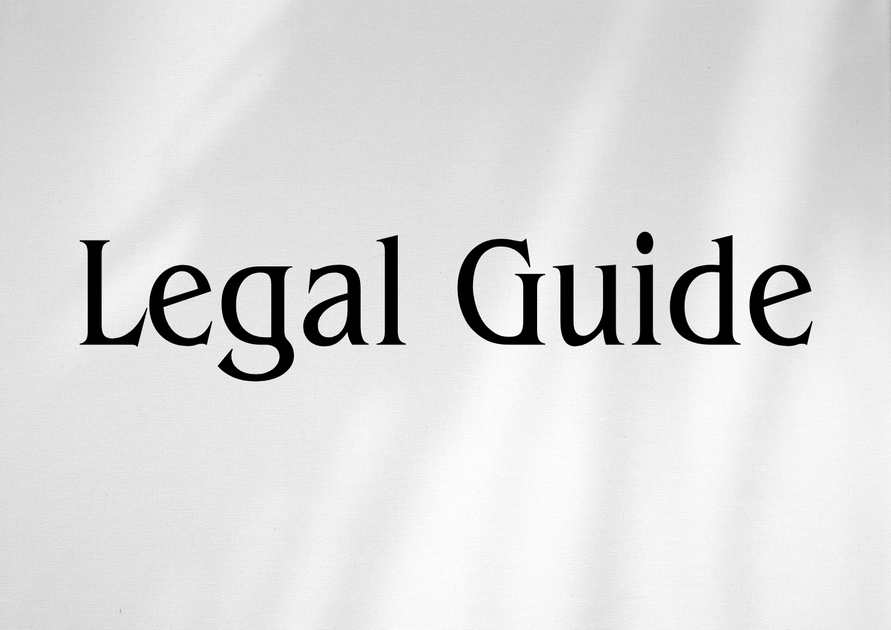Introduction: Unpacking the Importance of Federal Aviation Regulations in the UAE
The United Arab Emirates (UAE) has emerged as a pivotal hub in global aviation, renowned for its strategic geographical location, advanced infrastructure, and dynamic economy. As the industry flourishes, so too do the regulatory structures that underpin aviation safety, security, and compliance. Recent legal updates, including amendments under Federal Law No. 6 of 2018 (Regulating Civil Aviation in the UAE), supplemented by new ministerial resolutions and sector-specific decrees, have redefined the operational landscape for airlines, airports, service providers, and multinational organizations operating in the sector. The sophistication of these frameworks reflects the UAE’s commitment to international best practices, aligning with ICAO (International Civil Aviation Organization) standards, while supporting the nation’s ambitions under its Vision 2031 National Strategy.
For aviation executives, legal directors, HR professionals, and business leaders, understanding these regulations is not merely a matter of legal compliance—it is essential to business continuity, strategic planning, and risk mitigation. This article provides a nuanced breakdown of the UAE’s Federal Aviation Regulations, featuring expert analysis, practical compliance insights, and professional guidance on navigating the ever-evolving legal environment.
Table of Contents
- Overview of Federal Aviation Regulations in the UAE
- Core Federal Laws and Recent Decrees
- Key Provisions of the Federal Aviation Law
- Impact on UAE Businesses and Operators
- Comparison: Previous vs. Current Aviation Laws in the UAE
- Case Studies and Best Practices
- Risks of Non-Compliance and Strategic Compliance Tips
- Conclusion: Navigating the UAE Aviation Regulatory Future
Overview of Federal Aviation Regulations in the UAE
The Legal Foundation
The foundation of aviation regulation in the UAE is Federal Law No. 6 of 2018 (the Civil Aviation Law), as published in the Federal Legal Gazette. This law establishes the authority and jurisdiction of the General Civil Aviation Authority (GCAA), the federal entity tasked with regulating civil aviation matters across the Emirates. Its remit extends to safety protocols, air traffic management, aerodrome standards, environmental protection, aircraft registration, licensing, and enforcement.
Why the 2018 Law Matters in 2025
Recent amendments—particularly those advanced through Cabinet Resolution No. 77 of 2021 and Ministerial Decisions released by the Ministry of Energy and Infrastructure—reflect evolving international obligations and respond to the demands of rapid technological innovation (such as unmanned aerial vehicles, digital air traffic control, and cybersecurity threats). Aligning with directives from the UAE Ministry of Justice and the ICAO’s 19th Amendment, the updated regulations are designed to protect national security, optimize operational safety, and foster sustainable growth within the sector.
Core Federal Laws and Recent Decrees
Key Statutes and Regulatory Instruments
| Law/Instrument | Description | Official Source |
|---|---|---|
| Federal Law No. 6 of 2018 | Regulates civil aviation operations, safety, and licensing in the UAE. | Federal Legal Gazette, GCAA |
| Cabinet Resolution No. 77 of 2021 | Amended certain provisions of the Federal Civil Aviation Law; clarified penalties and operational requirements. | UAE Cabinet Portal |
| Ministerial Resolution No. 184/2022 | Introduced updated rules for drone operations and unmanned aerial vehicles (UAVs). | Ministry of Energy and Infrastructure |
| GCAA Safety Circulars | Regular technical guidance on safety, accidents, environmental rules, and airworthiness. | GCAA Official Website |
Legal Hierarchy and Application
The Civil Aviation Law empowers the GCAA to prepare, update, and enforce technical regulations across the UAE’s aviation ecosystem. Emirate-level authorities (such as the Department of Civil Aviation in Dubai) retain interpretative competence but must defer to federal law. In areas of conflict or overlap, federal statutes override local regulations, ensuring harmonization within the country’s multi-jurisdictional framework.
Key Provisions of the Federal Aviation Law
1. Safety and Airworthiness (Articles 5–16)
The law mandates rigorous certification and registration processes for aircraft operating in UAE airspace. Operators must obtain valid airworthiness certificates, submit to regular technical audits, and comply with safety management system (SMS) requirements as stipulated by GCAA technical manuals (refer: GCAA Official Portal). In addition, Article 10 addresses the obligation to report safety incidents, aircraft defects, and near-misses, with timelines and procedures prescribed via GCAA Safety Circulars.
2. Licensing and Personnel Qualification (Articles 17–29)
Pilots, aviation engineers, air traffic controllers, and crew must hold valid licenses as issued or recognized by the GCAA. Article 23 was updated to introduce mandatory recurrent training and digital records management, anticipating international crew mobility and the integration of electronic licensing systems.
3. Operator and Airport Certification (Articles 30–44)
Airlines, ground handlers, maintenance organizations, and all service providers are required to obtain certification and demonstrate compliance with technical, financial, and insurance conditions. Recent amendments have enhanced the scrutiny of foreign operators, particularly with respect to ownership, insurance, and operational security protocols (Cabinet Resolution No. 77/2021).
4. Unmanned Aerial Systems and Innovation (Articles 50–56)
Driven by technological growth, the law now explicitly regulates drones and UAVs. Ministerial Resolution No. 184/2022 sets out registration, geo-fencing, operator training, and minimum technical standards for drone use, both recreational and commercial. Failure to adhere to these standards can result in severe sanctions and the confiscation of equipment.
5. Enforcement, Penalties, and Dispute Resolution (Articles 57–70)
Violations of licensing, safety, or operational requirements can give rise to administrative, civil, and criminal penalties. The GCAA is authorized to impose fines, suspend or revoke licenses, and order remedial measures. Notably, dispute resolution mechanisms must exhaust administrative remedies before escalation to UAE civil courts, in line with due process safeguards set out in the UAE Civil Procedures Law.
Impact on UAE Businesses and Operators
Stakeholders Affected
The updated regulatory landscape affects a broad array of entities including:
- International and domestic airlines with UAE routes or code-share agreements
- Airport authorities and terminal operators
- Ground handling and maintenance firms
- UAV/drone technology companies
- Logistics providers reliant on air freight
- HR, compliance, and legal departments within aviation-linked organizations
How Regulatory Changes Affect Daily Operations
The 2021 and 2022 updates have introduced more stringent compliance requirements and imposed additional documentation and reporting obligations. For example, ongoing digitalization efforts (e.g., e-licensing and automated operational reporting) facilitate real-time surveillance by regulators but require organizations to invest in sophisticated IT infrastructure and continuous training.
Moreover, the specific rules on drone operations have opened up new commercial opportunities and compliance risks. Businesses employing UAVs for logistics, surveying, or security must ensure strict adherence to geo-fencing and operator registration mandates, or risk substantial penalties.
Comparison: Previous vs. Current Aviation Laws in the UAE
| Aspect | Pre-2018 Law | 2018 Law & Recent Updates (2021/2022) |
|---|---|---|
| Operator Certification | Basic certification, less emphasis on ongoing compliance | Strict certification, recurring audits, and enhanced reporting |
| Safety Management | General safety requirements, mostly manual reporting | Mandated SMS (Safety Management Systems), digital reporting, real-time audits |
| Drone Regulation | Minimal explicit coverage | Comprehensive rules for registration, geo-fencing, commercial use |
| Airworthiness | Standard airworthiness checks | Broader scope—electronic record-keeping, GCAA-led inspections |
| Enforcement/Penalties | Fixed fines, less room for discretion | Graduated penalties, administrative suspension, civil/criminal escalation |
Visual Suggestion
Placement of a visual infographic here: Penalty Comparison Chart – highlighting differences in fines, license actions, and enforcement tools for key violations.
Case Studies and Best Practices
Case Study 1: Integrating Drones in Logistics
ABC Logistics, a multinational based in Dubai, sought to deploy a fleet of drones for intra-city deliveries. Prior to the 2022 updates, the company operated with generic UAV permissions obtained at the Emirate level. Following Ministerial Resolution No. 184/2022, ABC Logistics was required to:
- Conduct full UAV registration with the GCAA
- Implement geo-fencing solutions on all units
- Arrange specialized training and certification for all operators
- Submit technical specs and safety assessments to federal authorities
Result: By complying with the updated requirements, ABC Logistics avoided operational shutdowns and gained GCAA recognition, enabling seamless scaling of their drone delivery network.
Case Study 2: Aircraft Maintenance Organization Audit
XYZ Maintenance Services, servicing multiple airlines at Abu Dhabi International Airport, underwent a GCAA audit in 2023. The audit focused on digital record-keeping, licensed personnel, and maintenance procedures as stipulated by the Civil Aviation Law. Gaps identified in their digital documentation resulted in a warning and procedural overhaul, which included upgraded IT systems, tighter internal audits, and annual staff retraining.
Key Lesson: Audits extend beyond technical compliance, delving into the adequacy of internal systems and staff competency. Swift corrective action mitigates enforcement risk.
Best Practices for UAE Aviation Compliance
- Establish robust internal compliance frameworks aligned to federal standards and update these in line with GCAA circulars and resolutions
- Use compliance checklists at each step of operational deployment—suggest placement of a compliance checklist visual here
- Maintain ongoing liaison with GCAA and monitor the Federal Legal Gazette for new decrees
- Invest in regular staff training across legal, operational, and technical spectrums
- Document every aspect of compliance for ease of external audit and internal review
Risks of Non-Compliance and Strategic Compliance Tips
Understanding the Risks
- Financial Penalties: Fines can now reach several million dirhams for serious violations, as evidenced by recent enforcement actions published in the GCAA’s annual reports.
- Operational Suspension: The GCAA may suspend flight permissions or operator licenses, causing direct business interruption.
- Loss of Market Access: Repeated or serious breaches may result in blacklisting or loss of landing rights, particularly for foreign operators.
- Civil and Criminal Liability: In cases involving gross negligence or endangerment of life, responsible individuals may face prosecution under the UAE Federal Penal Code.
Strategic Compliance Tips:
- Institute a central compliance office with direct reporting lines to executive management
- Adopt digital platforms for proactive monitoring of licenses, personnel qualifications, and incident reports
- Engage in regular internal and third-party audits—ideally semi-annually
- Ensure all new technologies (e.g., drones, digital maintenance systems) are immediately registered and operationally reviewed by legal counsel
- Leverage legal consultancy for ongoing updates, interpretation of new regulations, and representation in GCAA dispute processes
Conclusion: Navigating the UAE Aviation Regulatory Future
The UAE’s approach to aviation law underscores a proactive, risk-based, and globally-aligned ethos. The recent legal updates provide both challenges and opportunities for sector participants. Failing to comply with these nuanced regulations exposes businesses not just to penalties but to significant business disruption and reputational harm. Compliance requires not only adherence to current rules but anticipatory adaptation as further changes arise—particularly around safety management, UAV integration, and digital oversight.
Looking ahead, the most resilient organizations will be:
- Vigilant—constantly tracking legal updates through verified sources such as the UAE Government Portal and the Federal Legal Gazette
- Proactive—adapting compliance systems and investing in staff training to meet new regulatory benchmarks
- Strategic—leveraging legal consultancy and technology to turn regulatory mandates into business strengths
The dynamic evolution of federal aviation regulations ensures that the UAE remains at the forefront of global aviation safety and innovation. For organizations wishing to thrive, a culture of compliance and continuous legal awareness is vital. For tailored advice on UAE aviation law or for a full compliance audit, contact our expert legal team.



